Oliver and I haven’t traveled internationally together, alone since 2013 when we went to Tokyo when he was 12 years old.
Now he is 17, going on 18, and a burgeoning young adult, and we are off to Europe for the next two weeks.
Tonight we travel overnight to Malmö, Sweden, by way of Frankfurt and Copenhagen; we’re in Malmö until Monday, then by train to Berlin where we’ll spend three days (not nearly long enough). On Thursday, August 30 we join our friend Martina on the train from Berlin to Amersfoort where we’ll join a larger group of ragtag revolutionaries for the STM18 birthday unconference hosted by Elmine and Ton (and their daughter, who we will meet for the first time!) A short dash into Amsterdam for the night of Sept. 2 and 3 and then back to Halifax on the 4th, arriving back in Charlottetown on Sept. 5, just in time for Oliver to start grade 12 the next day.
We left Charlottetown just after 1:00 p.m., stopping at the Handpie Company in Albany for lunch (our first time at their dreamy new location in the old Bank of Nova Scotia). We made quick work of the drive to Halifax, parked the car at the Quality Inn (where they’ve upped the ante in the airport hotel wars, offering two weeks free parking with any reservation), and took the shuttle across to the airport.
As I type we are sitting in the fashionable lounge of the Alt Hotel Halifax Airport, where we have sought respite after the only recommendation from the friendly airport information desk clerk about how to kill two hours here was to “walk up and down the hall.” The hotel has tuck shop that serves coffee, and the lounge has all manner of comfortable nooks with power outlets and free wifi. If you ever have to spend any time at YHZ, come over hear and your time will be much more pleasant.
The next quest is Condor check-in for the flight to Frankfurt, followed by security and boarding. We’ve already interviewed the first-level CATSA agent about the best way to proceed, and he advised that we ask for the “family line,” which has relieved us greatly. Good on you, Halifax.
 ,
,  ,
, 
My friend Mark, upon learning that I fancied the odd fountain pen, suggested I consider attending “Pen Night,” an irregular gathering of pen afficianados held at The Bookmark bookstore in Charlottetown.
So I got myself on the mailing list.
And then watched half a dozen Pen Nights sail by, always finding myself otherwise engaged.
Fearing that the statute of limitations would see my name dropped off the list, I resolved that tonight would finally be the night.
Which is how I found myself, a few minutes after 7 o’clock, gingerly making my way into the midst of a small crowd of about ten of the pen-passionate.
And what a welcoming crowd they proved to be: generous with knowledge, patient when asked silly questions, and completely comfortable lying in the warm bath of nerdiness.
The evening began with a show-and-tell, where we were each invited to talk about a new pen, or a new paper, or a new experience. I proudly showed off my inexpensive German public school Pelikano fountain pen, passed around some lovely Japanese cardstock I picked up at Wonder Pens in Toronto in June, and passed out some of my Prince Edward Island postcards, printed this summer on my letterpress (if there was ever a group that would appreciate them, it was this).
The evening continued with a report of a trip to the Pen Show in Washington, DC, followed by a how-to for the process of converting inexpensive plastic fountain pens into a “eyedropper pens” by converting them so that the pen body, rather than a cartridge, holds the ink. Pen hacking, in other words.
We finished up with all manner of conversation, and questions, and the passing around of various things.
It was simply delightful. And I expect that I will now attend regularly, come hell or high water.

There are two public outdoor pianos in Charlottetown.
One of them is at the foot of Queen Street, under the eaves of the Charlottetown Tide Station. It was placed there by Downtown Charlottetown as an Instagramable tourism trope, and it is almost completely inoperable.
The other is a City of Charlottetown micro-grant-funded piano under the gazebo at Confederation Landing Park that is a project of Arduino for Autism. Despite having braved two summers outdoors, it’s still remarkably sound and vaguely in-tune. It also has lights.
We knew about the lights, but had never seen them until the other night when we stopped by while walking Ethan through the park. I’d always assumed the lights were broken, or that there was a secret switch or key that needed to be activated to turn them on. As it happens, all we needed to do was to plug the piano in to the electric outlet right beside it and, presto, the lights sprang to life.
Oliver sat down and took the piano through its paces. This prompted a vigorous discussion as to whether the lights were primarily affected by the pitch of the notes or by the volume of the sound; we didn’t reach a definitive conclusion.
If you’re going to visit an outdoor piano in Charlottetown, I recommend this one over the touristic one: it works better, is more fun to play, prompts more thoughtful discussion and, in the end, has more soul.
It rained for hours and hours and hours today here in Charlottetown and this made it impossible to ignore a couple of leaks in our 18 year old roof. I spent a good part of the day moving buckets around the attic.
For this and other reasons I was reminded of the day in early December 2010 when Oliver and I got up at dawn, in Venice, to take the train to Tipoteca, only to find the streets around our apartment flooded ankle-deep. As streets in Venice, in December, do.
Fortunately, at 10 years old, I could still pick up Oliver and carry him up the street to the bridge over the canal; from that point until the train station we were able to navigate on raised sidewalks that had been set up for the occasion.
When we returned, at the end of the day, the water had receded; it was as if the flood had never happened.
I’m hoping for the same outcome here tomorrow.
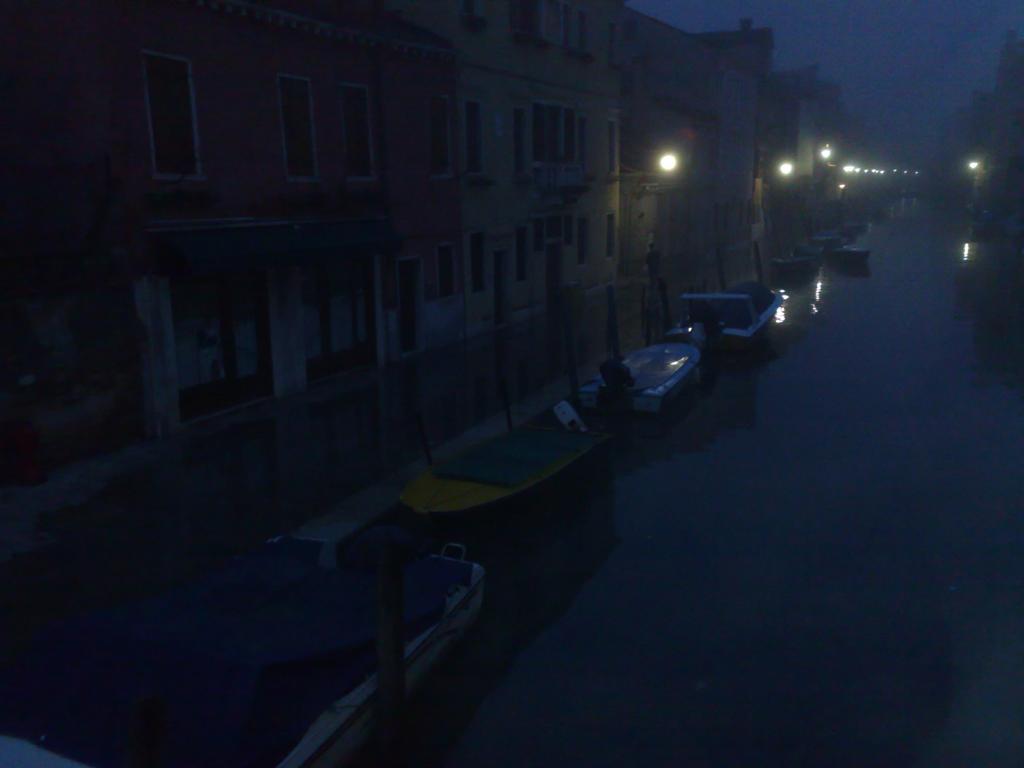
Oliver and I got into a debate this morning as to whether this is an entrance for centaurs or simply an entrance for those who work with horses.
I got as far as getting him to concede that if my suggestion that it was where the centaurs entered was true, it would be the more interesting and imaginative possibility.
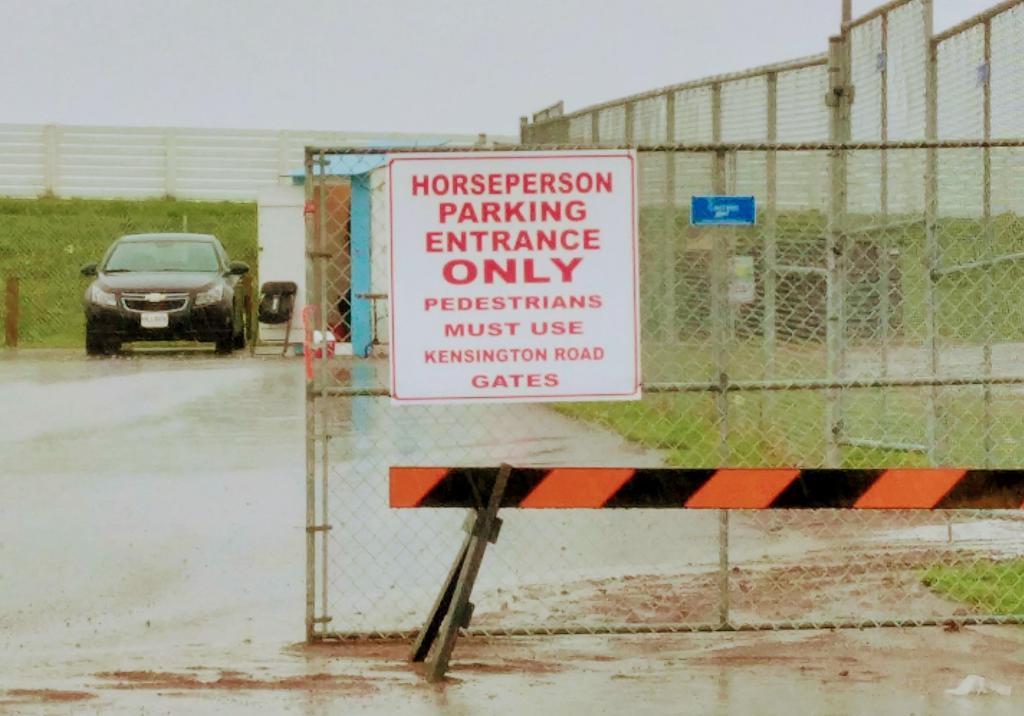
Oliver, me, and my brother Mike, each easily identifiable by our head shape, in a mirror at dusk at the PEI Preserve Company last night.
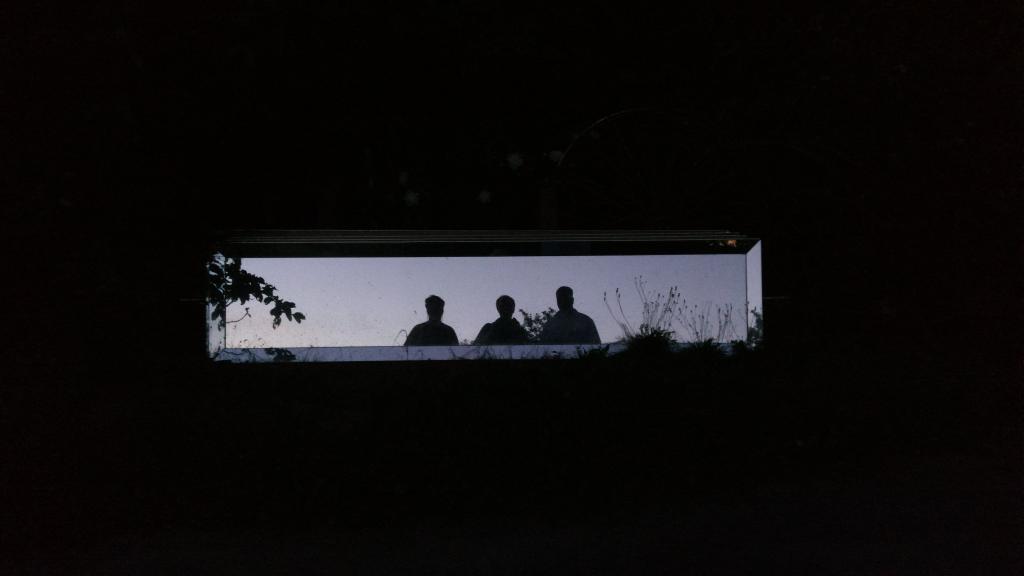
Late in the evening, after the tourists have disappeared, the COWS cow is let off its bolts and allowed to wander.
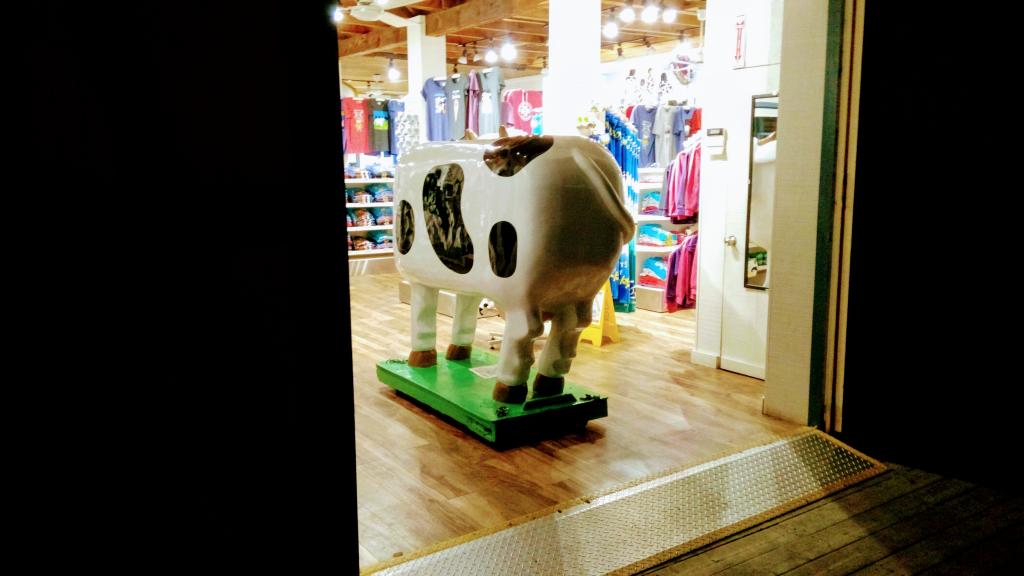
In a blog post this morning, Green Party of PEI leader Peter Bevan-Baker writes of his party’s struggles with trying to get information about freedom of information. He writes, in part:
Several months later, government tabled their amendments to the FOIPP Act. We felt the amendments fell far short of the promise of “modernizing” the Act. So during Question Period, my colleague, Hannah Bell, asked the current Minister Responsible, Jordan Brown, how many submissions were received and he replied “The direct answer to that question was over 40 submissions and my recollection is that the good portion of them were similar or greater in length to the submission that was received by the third party.” Well, that really impressed us, since our submission was 20 pages long and had 21 recommendations. So we asked him to table the responses, which he wouldn’t do, claiming that those who made the submissions did so with the expectation of confidentiality (Pro Tip: When the Office of the Third Party undertakes consultations we inform people in advance that their comments may be made public, and offer them the option to request confidentiality.)
You can probably guess what comes next. We FOIPPed the submissions, we waited 30 days, we were told that third-party consultations were underway, we waited an additional 30 days, and we received the documents. Imagine our disappointment to discover that in reality none of the submissions “were similar or greater in length” than ours. The closest was an eight page document that was entirely redacted under sec. 25(1) of the FOIPP Act, so I can’t tell you who it was from or what it was about.
As one of those who make a written submission with my comments about the modernizing of the FOIPP Act, I saw this process from the other side of the mountain; as I outlined here, on June 20, 2018 I received the “third party consultation letter,” to which I replied:
I have no objection to my submission being released.
It is already public and online at:
https://ruk.ca/content/modernize-freedom-information-and-protection-privacy-act
At the time I didn’t know that it was the Green Party that had submitted the FOIPP request; Mr. Bevan-Baker’s blog post closes the loop on this.
I think his suggestion, supported by Green Party practice, of including a “public by default; let us know if you need confidentiality” check for public consultations is a good one. While there are occasionally perfectly valid reasons for requesting to remain anonymous when making contributions to public policy, debate thrives best when it’s in the open, and this should be our default position.
After having 500 copies of the Charlottetown Boulder Park brochure printed, I needed places to put them.
I left about 50 with the office of the Clerk of the Legislative Assembly for placement inside the Hon. George Coles Building.
Which left me with needing a place for the remaining 450.
The food trucks surrounding the park were a logical place for some of them, but, as you can imagine, food trucks are already chock full of people, food, and supplies, and the last thing they need is something else squeezed in.
So I took matters into my own hands, and ordered a 3-pack of plexiglass outdoor tri-fold brochure holders with a lid from Amazon.ca (exorbitant at $52 plus $20 shipping, but those were cheap compared to what else I found), and they arrived today, and I installed them on electric poles beside the food trucks, ideally located where patrons waiting for their orders can improve their geological knowledge.
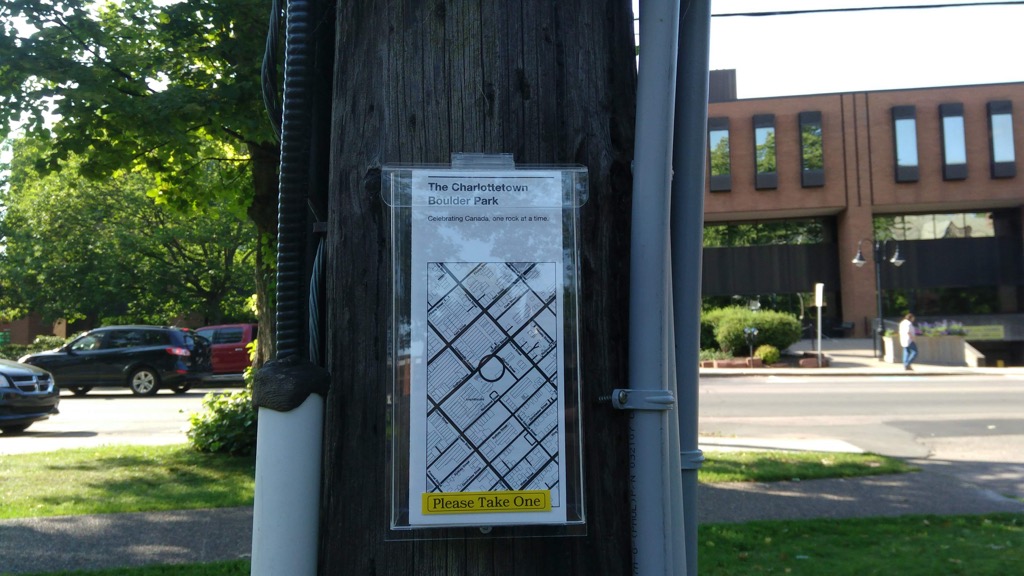
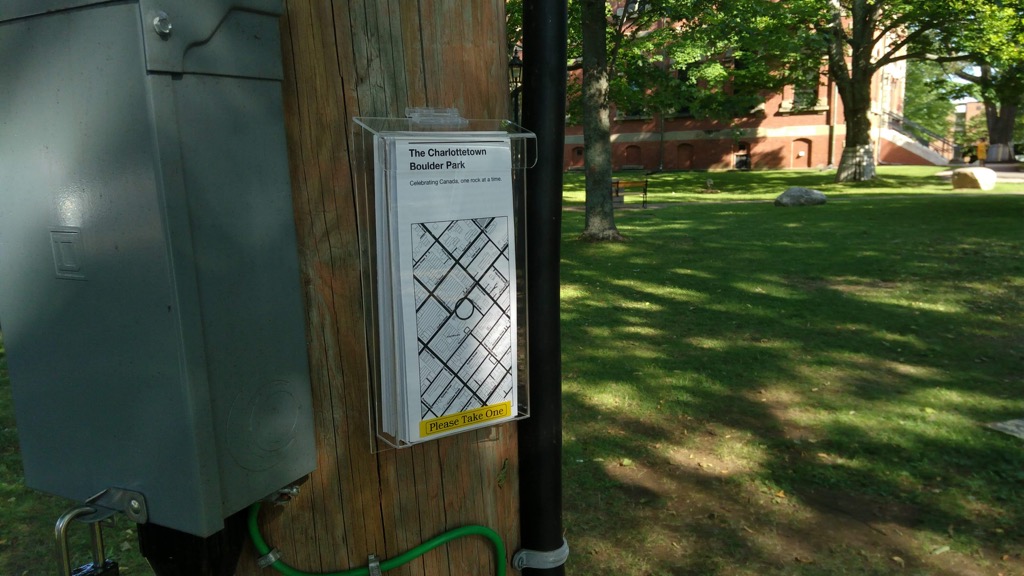
Please pick one up the next time you’re waiting for your burger, or your rolled ice cream, or that you’re looking for a shady spot to while away the hours.
Wayne Bernhardson, who splits his time between California and South America, writes about a happenstance encounter in Oakland with a couple driving overland from Ushuaia to Alaska:
Eduardo and Emilia, though, had car problems—the starter had given out on their 2012 vehicle and the Citroën itself is almost unknown in this country except, perhaps, for a few collectors. Parking outside, they had to leave the car running (and locked) because they could only start it on an incline. After a brief visit and a thermos of mate, drunk while Ona cavorted with my daughter’s boxer mix in the garden (my elderly and arthritic malamute could only observe), I accompanied them to our local mechanic, who told us they couldn’t work on the exotic French vehicle (Citroën have not been sold in the US since 1974).
Fortunately, using the mobile app iOverlander, they located a Guatemalan mechanic who managed to repair the starter, but their situation suggests a greater problem worth the attention of anyone who takes a Pan-American road trip.
Brings back memories of my old Datsun 510, which could only be started by judicious use of a screwdriver to perform the electrical functions that the malfunctioning ignition switch would normally perform. I recall finding myself in Ottawa once, unable to turn off the car lest I not be able to start it again, but in need of gasoline. In violation of many laws, and of common sense, I pulled up to a Canadian Tire gas bar in Kanata, to the pump farthest from the cashier, and gassed up without turning the car off.
 I am
I am